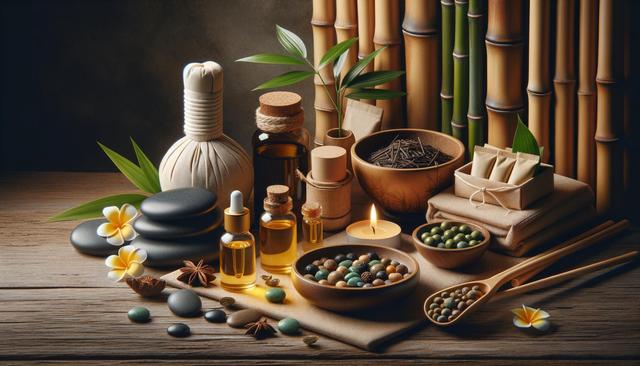The Philosophy Behind Asian Massage Traditions
Asian massage rituals are deeply rooted in holistic philosophies that emphasize the balance of energy within the body. These practices are often guided by ancient principles such as Qi (life force) in Chinese medicine or the concept of energy channels known as meridians. Rather than focusing solely on muscle manipulation, Asian massage techniques aim to address both physical and energetic imbalances. By encouraging the natural flow of energy, these methods promote not only physical health but also emotional and mental clarity.
One of the most distinctive aspects of Asian massage is its integration of body and mind. This holistic approach supports long-term wellness by addressing the root causes of discomfort, not just the symptoms. As a result, individuals often experience:
- Enhanced mental focus and reduced anxiety
- Improved circulation and energy flow
- Greater flexibility and muscle elasticity
- Relief from chronic stress and tension
Whether rooted in Thai, Chinese, or Japanese traditions, these massage styles share a commitment to restoring inner harmony, which is essential for overall wellbeing.
Popular Techniques and Their Unique Benefits
Asian massage encompasses a wide range of specialized methods, each offering distinct benefits. For example, Thai massage is known for its use of stretching and acupressure, often described as ‘passive yoga’ due to its emphasis on flexibility and body alignment. Chinese Tui Na focuses on rhythmic compression along energy meridians, stimulating both the circulatory and nervous systems. Meanwhile, Japanese Shiatsu applies finger pressure on specific points to release tension and improve energy flow.
Some of the most commonly practiced Asian massage styles include:
- Thai Massage: Involves assisted stretching, deep pressure, and movement-based techniques.
- Shiatsu: Uses finger pressure on acupuncture points to restore balance and relieve pain.
- Tui Na: Combines kneading, rolling, and pressing to target specific ailments and improve circulation.
- Ayurvedic Abhyanga: A warm oil massage from India that helps detoxify and nourish the skin and tissues.
Each technique is designed to address different aspects of health, making them highly adaptable to individual needs and preferences.
Health Benefits Beyond Relaxation
While relaxation is a key component of any massage, Asian massage techniques offer a range of additional health benefits. For instance, the stimulation of acupressure points can help release blocked energy, which may lead to improved organ function and reduced inflammation. The use of stretching in Thai massage enhances joint mobility and can be especially helpful for people with sedentary lifestyles or chronic stiffness.
Regular Asian massage therapy can contribute to:
- Improved immune function by reducing cortisol levels
- Better sleep quality due to its calming effects on the nervous system
- Relief from headaches and migraines through targeted pressure techniques
- Enhanced digestion and detoxification via abdominal massage and meridian activation
By integrating these ancient techniques into a modern wellness routine, individuals may find a natural, supportive path to maintaining physical and emotional balance.
Creating a Personalized Massage Experience
One of the strengths of Asian massage therapy is its adaptability to individual needs. Experienced practitioners often begin with a consultation to understand the client’s health history, current symptoms, and lifestyle. This personalized approach allows them to tailor the massage session for optimal effectiveness. For example, someone dealing with insomnia may benefit from a calming Shiatsu session, while someone experiencing lower back pain might find relief through targeted Tui Na techniques.
Clients can also enhance their massage experience by incorporating complementary elements such as:
- Aromatherapy using essential oils tailored to specific moods or ailments
- Breathing exercises and mindfulness techniques for deeper relaxation
- Warm herbal compresses to soothe tense muscles and improve circulation
Customizing the experience not only increases comfort but also deepens the therapeutic effects by addressing both emotional and physical needs.
Incorporating Asian Massage into a Wellness Routine
Integrating Asian massage into a regular wellness schedule can provide long-term benefits for both body and mind. Frequency can vary depending on personal health goals, ranging from weekly sessions for chronic conditions to monthly visits for maintenance and stress relief. Many individuals find that consistent massage therapy helps them stay more in tune with their bodies and better manage daily stressors.
To incorporate these practices effectively, consider the following tips:
- Schedule sessions during times of high stress or after intense physical activity
- Combine massage with other holistic practices such as yoga or meditation
- Stay hydrated before and after each session to support detoxification
- Communicate openly with your practitioner about your needs and experiences
By making massage therapy a regular part of your wellness journey, you can cultivate a more balanced, energized, and resilient lifestyle.
Conclusion: Embrace the Harmony of Ancient Rituals
Asian massage rituals offer a meaningful way to reconnect with your body and mind through time-honored healing traditions. Whether you’re seeking relief from physical tension, emotional stress, or simply looking to enhance your overall wellbeing, these techniques provide a holistic approach that supports lasting health. By exploring the variety of styles and benefits available, you can find a massage practice that resonates with your unique needs and helps you maintain a state of balance and vitality.






